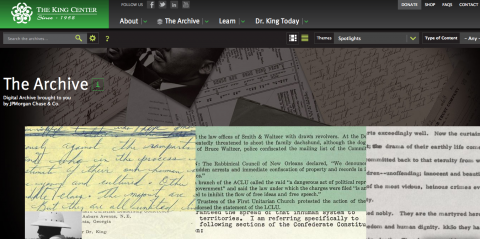It’s a new year, which means it’s time for the Edge.org to pose its annual question to some of the world’s finest minds. The 2012 edition asks the question, “What is Your Favorite Deep, Elegant, or Beautiful Explanation?” And the replies — 190 in total — feature thoughts by Sherry Turkle, Robert Sapolsky, Steven Pinker, and Daniel Dennett, plus the ones excerpted below. If you’re willing to venture down the rabbit hole, you can access the complete collection of responses here.
Where did we come from? I find the explanation that we were made in stars [that we are all stardust] to be deep, elegant, and beautiful. This explanation says that every atom in each of our bodies was built up out of smaller particles produced in the furnaces of long-gone stars. We are the byproducts of nuclear fusion. The intense pressures and temperatures of these giant stoves thickened collapsing clouds of tiny elemental bits into heavier bits, which once fused, were blown out into space as the furnace died. The heaviest atoms in our bones may have required more than one cycle in the star furnaces to fatten up. Uncountable numbers of built-up atoms congealed into a planet, and a strange disequilibrium called life swept up a subset of those atoms into our mortal shells. We are all collected stardust. And by a most elegant and remarkable transformation, our starstuff is capable of looking into the night sky to perceive other stars shining. They seem remote and distant, but we are really very close to them no matter how many lightyears away. All that we see of each other was born in a star. How beautiful is that?
Kevin Kelly, Wired co-founderhere and don’t miss Susskind’s complete physics lectures here].
Leonard Susskind, Physics Professor, Stanford.
[T]here is one elegant and deep statement (which, alas, is not quite an “explanation”) … that I find very useful as well as beautifully simple.
I refer to the well-known lines Lord Acton wrote in a letter from Naples in 1887 to the effect that: “Power tends to corrupt, and absolute power corrupts absolutely.” At least one philosopher of science has written that on this sentence an entire science of human beings could be built.
I find that the sentence offers the basis for explaining how a failed painter like Adolph Hitler and a failed seminarian like Joseph Stalin could end up with the blood of millions on their hands; or how the Chinese emperors, the Roman popes, or the French aristocracy failed to resist the allure of power. When a religion or ideology becomes dominant, the lack of controls will result in widening spirals of license leading to degradation and corruption. [More here].
Mihaly Csikszentmihalyi; Psychologist
You can dive into the full collection at Edge.org. The photo above was taken by Marco Bellucci.




